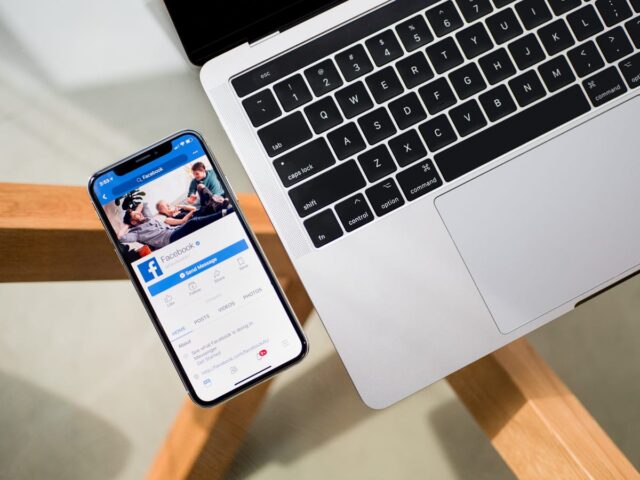Facebook Lead Ads are a powerful tool for businesses looking to capture customer information directly from the Facebook platform without redirecting users to a separate landing page. Whether your goal is to generate leads, build an email list, or increase sign-ups, Facebook Lead Ads provide an efficient, mobile-friendly way to engage potential customers and drive conversions.
In this blog, we’ll explore how Facebook Lead Ads work, why they are effective, and the best practices for driving conversions with this ad format.

1. What Are Facebook Lead Ads?
Facebook Lead Ads are a specialized ad format that allows users to submit their contact information through a pre-populated form without leaving Facebook or Instagram. This ad type reduces friction by eliminating the need for users to visit an external website or fill in lengthy forms, improving conversion rates, especially on mobile devices.
Here’s how it works:
- When a user clicks on a Lead Ad, a form pops up within the app, displaying fields that are already filled with their contact details (like name and email) based on their Facebook profile.
- The user can submit the form with a single click, making it easier for businesses to collect leads while keeping the user experience seamless.
Facebook Lead Ads are commonly used for:
- Newsletter subscriptions
- Event registrations
- Quote requests
- Product or service inquiries
- Discount offers or coupon downloads
2. Why Facebook Lead Ads Are Effective
Several features of Facebook Lead Ads make them an effective option for driving conversions:
- Mobile-Friendly: With over 70% of Facebook’s traffic coming from mobile, lead ads are optimized for mobile devices. The form is quick to fill out, and the process keeps users within the platform, reducing drop-off rates.
- Pre-Filled Information: The form is pre-filled with details from the user’s Facebook profile, eliminating the need to manually enter information and making the process fast and convenient.
- Customizable Forms: You can tailor the form fields to your specific needs, whether you’re asking for basic contact details or more in-depth information, such as job title or budget preferences.
- Integration with CRM: Facebook Lead Ads can be integrated with most Customer Relationship Management (CRM) systems, allowing for real-time lead collection and automated follow-ups.
3. Best Practices for Driving Conversions with Facebook Lead Ads
To get the most out of Facebook Lead Ads, there are key strategies and best practices that you should implement to optimize performance and drive more conversions.
a) Clearly Define Your Goal
Before launching a Facebook Lead Ad, identify the specific action you want users to take. Whether it’s signing up for a newsletter, downloading an ebook, or requesting a consultation, your ad copy, form fields, and call to action (CTA) should align with that objective.
- Tip: Use a single, clear call to action like “Sign Up,” “Get a Quote,” or “Download Now” to minimize confusion and encourage action.
b) Target the Right Audience
A well-defined audience is essential to maximize conversions. Facebook’s targeting options allow you to reach users based on interests, behaviors, demographics, and even custom audiences.
- Custom Audiences: Use data from your existing customers to create custom audiences for targeting, ensuring your lead ads reach people most likely to convert.
- Lookalike Audiences: Create lookalike audiences based on your highest-converting leads to find new users similar to your best customers.
- Tip: Use Facebook’s lead optimization feature, which automatically shows your ads to people most likely to fill out a lead form.
c) Keep the Form Simple and Short
The fewer fields you require in your lead form, the higher the chances of conversion. While it may be tempting to gather as much information as possible, each additional field increases friction and decreases the likelihood of submission.
- Tip: Stick to 2-4 fields for most lead generation campaigns, such as name, email, and phone number. If you need more information, use optional questions or offer an incentive like a discount.
d) Incentivize the Offer
People are more likely to provide their information if they feel they’re getting something valuable in return. This could be a discount, exclusive content, or an opportunity to enter a contest.
- Examples of incentives:
- A 10% discount for new customers
- Access to a free webinar or ebook
- Entry into a sweepstake for a high-value prize
- Tip: Clearly highlight the benefit or incentive in your ad copy and form description, emphasizing what the user will get by completing the form.
e) Craft Compelling Ad Copy and Creative
Your ad creative (images, videos, and copy) plays a crucial role in catching the user’s attention and encouraging them to take action. Focus on the pain points or desires of your target audience and highlight how your product or service can solve their problems or fulfill their needs.
- Ad Creative: Use high-quality, visually appealing images or short, engaging videos that capture attention.
- Ad Copy: Keep your copy concise and highlight the benefits of submitting the form. Use a strong CTA that clearly tells users what to do next (e.g., “Get Your Free Quote” or “Download the Free Guide”).
- Tip: Test different ad formats (images, videos, carousels) to see what resonates most with your audience and produces the highest conversions.
f) Optimize for Mobile Devices
Since the majority of users on Facebook are mobile, ensure your Lead Ads are optimized for smaller screens. Make sure that the images and videos you use are mobile-friendly and load quickly.
- Tip: Preview your ads in Facebook’s Mobile View before launching to ensure they display correctly across devices.
g) Test, Track, and Optimize
To continually improve your conversion rates, you need to test different elements of your Lead Ads. A/B testing allows you to test various aspects such as headlines, images, copy, form length, and CTA to find out what resonates best with your audience.
- Test variations: Experiment with short vs. long copy, different incentives, or even different target audiences to discover which combinations drive the most leads.
- Track performance: Use Facebook’s Ads Manager to monitor important metrics such as lead volume, cost per lead, and conversion rate.
- Optimize: Make data-driven adjustments to your ads, focusing on improving your cost per lead and maximizing your budget.
4. Follow-Up with Leads Quickly
The work doesn’t stop after collecting leads. Promptly following up with leads is crucial for conversions. Studies show that responding to a lead within the first 5 minutes increases the likelihood of conversion.
- Tip: Use automated emails or CRM software to immediately send a thank-you message or offer follow-up information to newly acquired leads. Personalized follow-ups can help build relationships and move prospects down the sales funnel.
5. Integrate Facebook Lead Ads with Your CRM
Integrating your Facebook Lead Ads with a CRM or email marketing tool can streamline the lead management process. Instead of manually downloading and uploading leads, you can automate the process and trigger actions like sending an email sequence, assigning leads to sales reps, or nurturing leads with relevant content.
- Tip: Use tools like Zapier, HubSpot, or MailChimp to automatically import leads into your CRM, so your sales and marketing teams can respond quickly.
Conclusion
Facebook Lead Ads are an effective way to capture leads directly on the platform, providing an easy and convenient experience for users and a powerful conversion tool for businesses. By targeting the right audience, simplifying the lead form, offering an incentive, and crafting compelling ad copy, you can significantly boost your conversions. Additionally, integrating lead ads with your CRM and following up quickly can help turn those leads into paying customers.


No responses yet